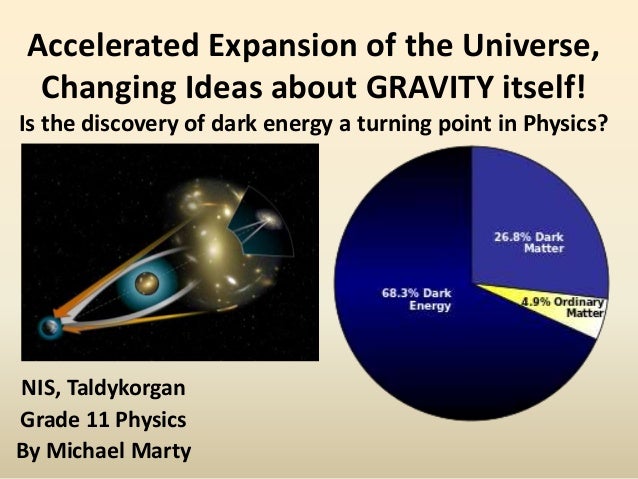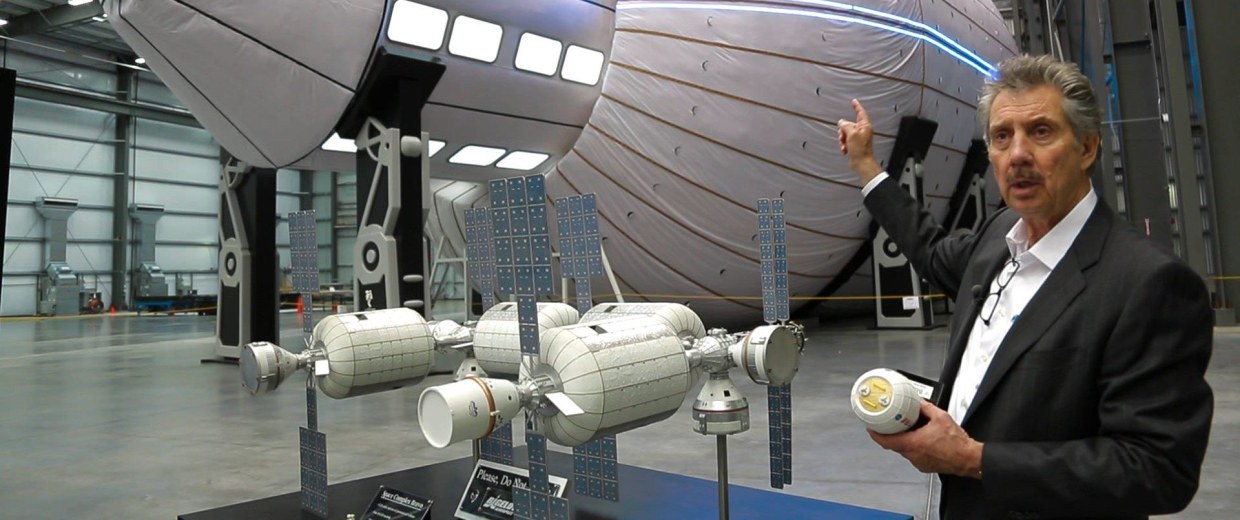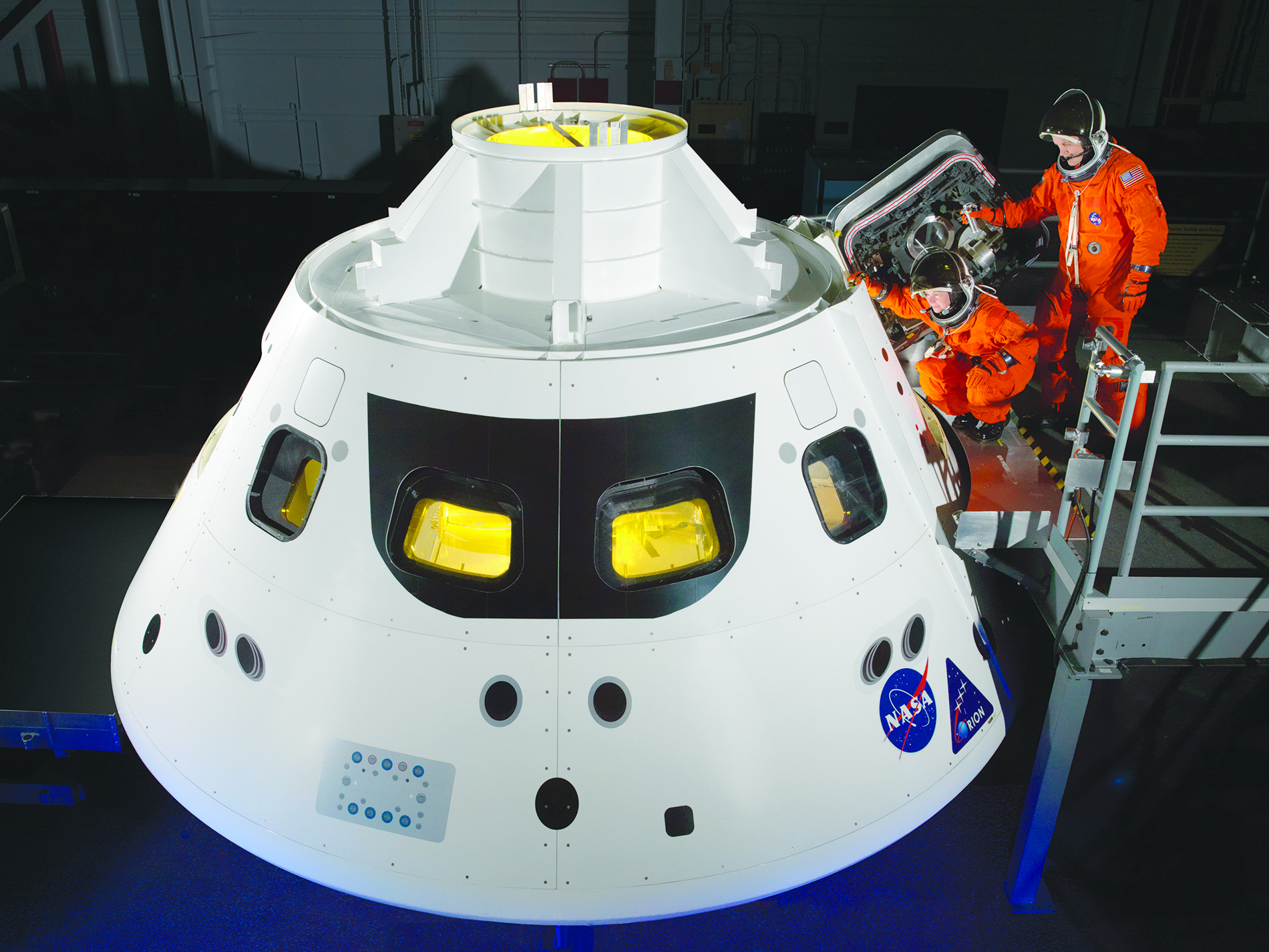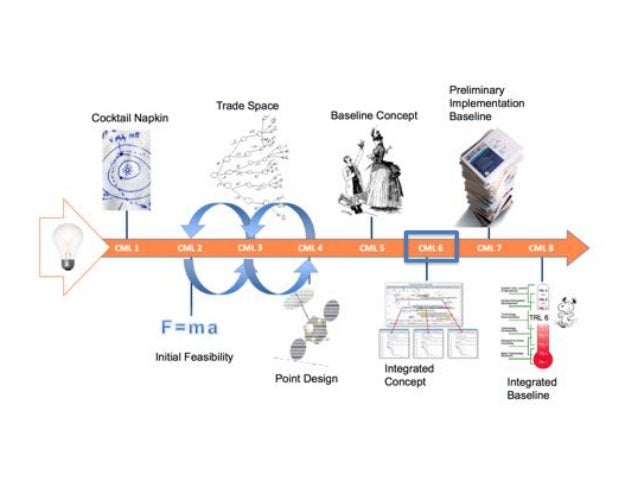/cdn0.vox-cdn.com/uploads/chorus_asset/file/7525853/photoGalHiResImage_32.jpg) |
| Thales Alenia Space Nabs $94M Contract for SWOT Satellite SWOT Satellite Artist Rendering |
/cdn0.vox-cdn.com/uploads/chorus_image/image/51978893/505317216.0.jpeg) |
| SpaceX Falcon 9 Rocket |



 |
| SWOT: Technology - Ka-Band Radar Interferometer Artists concept of SWOT KaRIN instrument. |
Altimeter System
| Orbit Height | Orbit Type | Swath | Frequency | Height Precision | Spatial Resolution | |||
|---|---|---|---|---|---|---|---|---|
| SWOT | 857- 890 km | 22-day repeat 78 Deg Inclination | 120 km | Ka-band | ~1 cm @ | 1 km resolution |
NASA Sets Launch for Global Surface Water Survey (SWOT) Mission
NASA has selected Space Exploration Technologies (SpaceX) of Hawthorne, California, to provide launch services for the agency's Surface Water and Ocean Topography (SWOT) mission. Launch is targeted for April 2021 on a SpaceX Falcon 9 rocket from Space Launch Complex 4E at Vandenberg Air Force Base in California.
The total cost for NASA to launch SWOT is approximately $112 million, which includes the launch service; spacecraft processing; payload integration; and tracking, data and telemetry support.
Designed to make the first-ever global survey of Earth's surface water, in addition to high-resolution ocean measurements, the SWOT mission will collect detailed measurements of how water bodies on Earth change over time. The satellite will survey at least 90 percent of the globe, studying Earth's lakes, rivers, reservoirs and oceans, at least twice every 21 days; aid in freshwater management around the world; and improve ocean circulation models and weather and climate predictions. The SWOT spacecraft will be jointly developed and managed by NASA and the French space agency Centre National d'Etudes Spatiales (CNES).
NASA's Launch Services Program at Kennedy Space Center in Florida will manage the SpaceX launch service. The SWOT project office at NASA's Jet Propulsion Laboratory in Pasadena, California, manages spacecraft development for the agency's Science Mission Directorate in Washington.
For more information on SWOT, visit: http://swot.jpl.nasa.gov/
For more information about NASA programs and missions, visit: http://www.nasa.gov
SpaceX wins NASA contract to launch ocean-surveying satellite - The Verge
It marks yet another critical science mission that SpaceX will be launching for NASA. The company launched the Jason-3 ocean-monitoring satellite for the space agency in January, and in 2017 SpaceX is supposed to launch NASA’s Transiting Exoplanet Survey Satellite, or TESS, designed to look for small planets around bright stars outside our Solar System.
“We’re excited to carry this critical science payload into orbit for NASA, the nation, and the international community,” SpaceX president Gwynne Shotwell said in a statement. “We appreciate NASA’s partnership and confidence in SpaceX as a launch provider.”
The total cost of launching SWOT is valued at $112 million, according to NASA, which seems a little pricey given SpaceX’s Falcon 9 rockets supposedly start at $62 million. Plus, it’s a much higher value than previous launch contracts NASA has awarded to SpaceX; the cost of launching the Jason-3 satellite was valued at $82 million, and the cost of launching TESS is $87 million.
Well according to NASA, the $112 million doesn’t just cover the cost of launching the Falcon 9 rocket; it’s the total cost of launching SWOT overall. So some of that money is going to SpaceX while the rest is going to other organizations that will provide “additional support” needed to get SWOT into space. However, NASA declined to go into specifics about what that added support entails. “The specific launch service price is considered competition and procurement sensitive information,” NASA spokesperson Cheryl Warner said in a statement.
Meanwhile, SpaceX is still grounded from spaceflight after one of its Falcon 9 rockets exploded on a Florida launchpad in September. After months of investigation, CEO Elon Musk said the company finally figured out what caused the failure, noting it was the most complicated problem SpaceX has ever had to solve. Musk said they are targeting a return-to-flight mission before the end of the year, but an official launch date has yet to be announced.
References/Background:
- SpaceX to Build Spacecraft for NASA's New Mission SWOT | Digital Trends
- NASA Selects Launch Services for Global Surface Water Survey Mission
- Advances in interferometric synthetic aperture radar (InSAR) in earth system scienceAbstract: During recent years, synthetic aperture radar (SAR) interferometry (InSAR) has become an important tool for precise measurements of the earth’s surface topography and deformation. This paper presents an overview on recent developments in InSAR applications, with emphasis on the use of satellite-borne sensors for applications in geoscience, topographic mapping, natural hazard monitoring and environmental research. InSAR measurement principles are briefly introduced. Recent results on the use of repeat-pass interferometry for mapping seismic and volcanic deformation, monitoring landslides and subsidence, and mapping glacier motion are described. Other InSAR applications introduced in the paper are: topographic mapping, retrieval of biogeophysical parameters on land surfaces, and measurements of water currents. Examples of interferometric products are shown for satellite-borne SAR systems operating at X-band, C-band and L-band radar frequencies. An outlook is provided on upcoming SAR systems which will spur further advances in InSAR techniques and applications.
- Characterization of complex fluvial systems using remote sensing of spatial and temporal water level variations in the Amazon, Congo, and Brahmaputra Rivers - Jung - 2010 - Earth Surface Processes and Landforms - Wiley Online Library Abstract: The Surface Water and Ocean Topography (SWOT) satellite mission will provide global, space-based estimates of water elevation, its temporal change, and its spatial slope in fluvial environments, as well as across lakes, reservoirs, wetlands, and floodplains. This paper illustrates the utility of existing remote sensing measurements of water temporal changes and spatial slope to characterize two complex fluvial environments. First, repeat-pass interferometric SAR measurements from the Japanese Earth Resources Satellite are used to compare and contrast floodplain processes in the Amazon and Congo River basins. Measurements of temporal water level changes over the two areas reveal clearly different hydraulic processes at work. The Amazon is highly interconnected by floodplain channels, resulting in complex flow patterns. In contrast, the Congo does not show similar floodplain channels and the flow patterns are not well defined and have diffuse boundaries. During inundation, the Amazon floodplain often shows sharp hydraulic changes across floodplain channels. The Congo, however, does not show similar sharp changes during either infilling or evacuation. Second, Shuttle Radar Topography Mission measurements of water elevation are used to derive water slope over the braided Brahmaputra river system. In combination with in situ bathymetry measurements, water elevation and slope allow one to calculate discharge estimates within 2.3% accuracy. These two studies illustrate the utility of satellite-based measurements of water elevation for characterizing complex fluvial environments, and highlight the potential of SWOT measurements for fluvial hydrology. Copyright © 2010 John Wiley & Sons, Ltd.
- Observing Global Surface Water Flood Dynamics | SpringerLink
Abstract: Flood waves moving along river systems are both a key determinant of globally important biogeochemical and ecological processes and, at particular times and particular places, a major environmental hazard. In developed countries, sophisticated observing networks and ancillary data, such as channel bathymetry and floodplain terrain, exist with which to understand and model floods. However, at global scales, satellite data currently provide the only means of undertaking such studies. At present, there is no satellite mission dedicated to observing surface water dynamics and, therefore, surface water scientists make use of a range of sensors developed for other purposes that are distinctly sub-optimal for the task in hand. Nevertheless, by careful combination of the data available from topographic mapping, oceanographic, cryospheric and geodetic satellites, progress in understanding some of the world’s major river, floodplain and wetland systems can be made. This paper reviews the surface water data sets available to hydrologists on a global scale and the recent progress made in the field. Further, the paper looks forward to the proposed NASA/CNES Surface Water Ocean Topography satellite mission that may for the first time provide an instrument that meets the needs of the hydrology community.
Keywords: Floods Surface water Flood plains RiversWetlands Remote sensing Surface water ocean topography (SWOT) mission - D. Moller, G. Farquharson and D. Esteban-Fernandez, "Assessment of
near-nadir correlation characteristics over water bodies using
interferometric SAR: Implications for the swot mission," 2016 IEEE International Geoscience and Remote Sensing Symposium (IGARSS), Beijing, China, 2016, pp. 3219-3222.
doi: 10.1109/IGARSS.2016.7729833
Abstract: This paper introduces the use of an airborne interferometric synthetic aperture radar (InSAR) to estimate water surface decorrelation times at Ka-Band. Such an assessment is directly relevant to the upcoming Surface Water and Ocean Topography mission, especially for surface water bodies such as lakes and rivers since the surface decorrelation may limit the spatial resolution achievable by the mission to delineate water spatial boundaries. Initial assessments indicate decorrelation times consistent with limited published observations for the ocean and fresh water bodies (several milliseconds). However, there are challenges both in terms of the phenomenology and in the instrument sensitivity to longer decorrelations.
keywords: {Decorrelation;Lakes;Sea measurements;Sea surface;Surface topography;Synthetic aperture radar;Interferometry;Ka-band;SWOT},
URL: http://ieeexplore.ieee.org/stamp/stamp.jsp?tp=&arnumber=7729833&isnumber=7728980 - Measuring surface water from space - Alsdorf - 2007 - Reviews of Geophysics - Wiley Online Library Abstract:
[1] Surface fresh water is essential for life, yet we have surprisingly
poor knowledge of the spatial and temporal dynamics of surface
freshwater discharge and changes in storage globally. For example, we
are unable to answer such basic questions as “What is the spatial and
temporal variability of water stored on and near the surface of all
continents?” Furthermore, key societal issues, such as the
susceptibility of life to flood hazards, cannot be answered with the
current global, in situ networks designed to observe river discharge at
points but not flood events. The measurements required to answer these
hydrologic questions are surface water area, the elevation of the water
surface (h), its slope (∂h/∂x), and temporal change (∂h/∂t). Advances in
remote sensing hydrology, particularly over the past 10 years and even
more recently, have demonstrated that these hydraulic variables can be
measured reliably from orbiting platforms. Measurements of inundated
area have been used to varying degrees of accuracy as proxies for
discharge but are successful only when in situ data are available for
calibration; they fail to indicate the dynamic topography of water
surfaces. Radar altimeters have a rich, multidecadal history of
successfully measuring elevations of the ocean surface and are now also
accepted as capable tools for measuring h along orbital profiles
crossing freshwater bodies. However, altimeters are profiling tools,
which, because of their orbital spacings, miss too many freshwater
bodies to be useful hydrologically. High spatial resolution images of
∂h/∂t have been observed with interferometric synthetic aperture radar,
but the method requires emergent vegetation to scatter radar pulses back
to the receiving antenna. Essentially, existing spaceborne methods have
been used to measure components of surface water hydraulics, but none
of the technologies can singularly supply the water volume and hydraulic
measurements that are needed to accurately model the water cycle and to
guide water management practices. Instead, a combined imaging and
elevation-measuring approach is ideal as demonstrated by the Shuttle
Radar Topography Mission (SRTM), which collected images of h at a high
spatial resolution (∼90 m) thus permitting the calculation of ∂h/∂x. We
suggest that a future satellite concept, the Water and Terrestrial
Elevation Recovery mission, will improve upon the SRTM design to permit
multitemporal mappings of h across the world's wetlands, floodplains,
lakes, reservoirs, and rivers.
- D.
Desroches, R. Fjørtoft, D. Massonnet, J. Duro, J. M. Gaudin and N.
Pourthie, "Inland Water Height Estimation Without Ground Control Points
for Near-Nadir InSAR Data," in IEEE Geoscience and Remote Sensing Letters, vol. 13, no. 9, pp. 1354-1358, Sept. 2016.
doi: 10.1109/LGRS.2016.2585858
Abstract: Surface Water and Ocean Topography (SWOT) is a future wide-swath radar altimetry mission. The main instrument is the Ka-band radar interferometer (KaRIn). It provides interferometric radar images that will be processed to obtain water elevation estimates worldwide. Due to the specific geometric and radiometric characteristics of KaRIn/SWOT, the phase-to-height conversion is one of the most critical processing steps. We propose methods to estimate water heights without using classical approaches based on spatial phase unwrapping and control points. Results obtained on the simulated SWOT data are shown.
keywords: {oceanographic techniques;radar imaging;radar interferometry;synthetic aperture radar;Ka-band radar interferometer;KaRIn-SWOT geometric characteristics;KaRIn-SWOT radiometric characteristics;Surface Water and Ocean Topography;ground control points;inland water height estimation;interferometric radar images;near-Nadir InSAR data;simulated SWOT data;water elevation estimates;wide-swath radar altimetry mission;Estimation;Geometry;Rivers;Spaceborne radar;Synthetic aperture radar;Thermal noise;Altimetry;hydrology;interferometry;phase unwrapping;synthetic aperture radar (SAR)},
URL: http://ieeexplore.ieee.org/stamp/stamp.jsp?tp=&arnumber=7518606&isnumber=7534955 - R. Fjørtoft, P. Callahan, E. Rodriguez and D. Desroches, "Processing of proposed KARIN/SWOT data," 2013 IEEE International Geoscience and Remote Sensing Symposium - IGARSS, Melbourne, VIC, 2013, pp. 4515-4518.
doi: 10.1109/IGARSS.2013.6723839
Abstract: This article summarizes the data processing of the proposed wide-swath altimetry mission Surface Water and Ocean Topography (SWOT), and more specifically the processing steps up to level 2 for the Ka-band Radar Interferometer (KaRIn), which is a near-nadir viewing bistatic SAR system. A general overview of the proposed processing chains and data products is given, and some particularly challenging processing steps are commented on.
keywords: {remote sensing by radar;synthetic aperture radar;KARIN-SWOT data;Ka-band Radar Interferometer;SWOT wide-swath altimetry mission;Surface Water and Ocean Topography;bistatic SAR system;Abstracts;Extraterrestrial measurements;Hydrology;Interferometry;Oceans;Orbits;Sea measurements;Altimetry;hydrology;interferometry;oceanography;synthetic aperture radar},
URL: http://ieeexplore.ieee.org/stamp/stamp.jsp?tp=&arnumber=6723839&isnumber=6721065
- M. Ludwig, E. Daganzo-Eusebio and M. Davidson, "Ka-Band radar missions for earth observation," 2013 IEEE International Geoscience and Remote Sensing Symposium - IGARSS, Melbourne, VIC, 2013, pp. 2289-2292.
doi: 10.1109/IGARSS.2013.6723275
Abstract: The use of Ka-Band in remote sensing creates new opportunities in Earth observation for science and civil security applications due to the unique characteristics of this higher frequency range. Several Ka-Band satellite missions and instruments are currently under development or close to launch (e.g. ALTIKA altimeter, SWOT satellite, etc). In addition, studies into future interferometric SAR missions are on-going and there is an increasing interest in the capabilities offered by radar systems at higher frequencies. This paper reports on major trends as derived from the 1st International Workshop on Ka-band Earth Observation Radar Missions (KEO'12), which was organized by the European Space Agency at ESA/ESTEC (The Netherlands) in November 2012.
keywords: {remote sensing by radar;AD 2012 11;ESA-ESTEC;European Space Agency;Ka-band Earth Observation Radar Missions;Ka-band radar missions;Ka-band satellite missions;The Netherlands;civil security application;interferometric SAR missions;remote sensing;science application;Conferences;Earth;Instruments;Interferometry;Spaceborne radar;Synthetic aperture radar;Ka-band;interferometry;radar},
URL: http://ieeexplore.ieee.org/stamp/stamp.jsp?tp=&arnumber=6723275&isnumber=6721065 - R. Fjørtoft et al., "KaRIn on SWOT: Characteristics of Near-Nadir Ka-Band Interferometric SAR Imagery," in IEEE Transactions on Geoscience and Remote Sensing, vol. 52, no. 4, pp. 2172-2185, April 2014.
doi: 10.1109/TGRS.2013.2258402
Abstract: The principal instrument of the NASA/CNES wide-swath altimetry mission Surface Water and Ocean Topography (SWOT) is the Ka-band Radar Interferometer (KaRIn), a bistatic synthetic aperture radar (SAR) system operating on near-nadir swaths on both sides of the satellite track. There are limited reports on backscattering from natural surfaces at this short wavelength and particular observation geometry. Near-field backscattering measurements on water, as well as the first interferometric airborne SAR acquisitions at Ka-band covering the 0.6 °-3.9 ° incidence range of KaRIn, were therefore conducted. The experimental results confirm expected characteristics of near-nadir Ka-band interferometric SAR imagery, such as strong water/land radiometric contrast (typically in the order of 10 dB) and very high interferometric coherence on water.
keywords: {backscatter;hydrological techniques;oceanographic techniques;radar imaging;radar interferometry;radiometry;remote sensing by radar;spaceborne radar;synthetic aperture radar;KaRIn;NASA-CNES wide-swath altimetry mission;SAR system;SWOT;Surface Water and Ocean Topography;bistatic synthetic aperture radar system;interferometric airborne SAR acquisition;interferometric coherence;natural surfaces;near-field backscattering measurement;near-nadir Ka-band interferometric SAR imagery;near-nadir swath;observation geometry;satellite track;water-land radiometric contrast;Backscatter;Land surface;Rough surfaces;Sea measurements;Sea surface;Surface waves;Synthetic aperture radar;Altimetry;hydrology;interferometry;millimeter wave radar;oceanography;synthetic aperture radar},
URL: http://ieeexplore.ieee.org/stamp/stamp.jsp?tp=&arnumber=6553583&isnumber=6695798
- X.
Wu, S. Hensley, E. Rodriguez, D. Moller, R. Muellerschoen and T.
Michel, "Near nadir Ka-band sar interferometry: SWOT airborne
experiment," 2011 IEEE International Geoscience and Remote Sensing Symposium, Vancouver, BC, 2011, pp. 2681-2684.
doi: 10.1109/IGARSS.2011.6049755
Abstract: To better prepare data processing system of the Ka-band Radar Interferometer (KaRIn) for the Surface Water and Ocean Topography (SWOT) [1] mission, we opportunistically collected data over several diverse fresh-water targets in the Van Hook Arm areas of North Dakota, USA, using a Ka-band interferometric radar [2] developed at JPL. To make the collection relevant to SWOT, the aircraft was rolled to direct the antenna boresight toward nadir to mimic the SWOT geometry. Using a modified airborne interferometric SAR processor [3] developed at JPL, we were able to process the collected Ka-band airborne data and produced the height and magnitude image products. These results are the first of the kind for Ka-band interferometric synthethic aperture radar over water surfaces with near nadir looking geometry. These initial results will help to characterize the power returns from water surface and land, and provide guidance for the design of post-processing algorithms including methods for water and land classification. The height accuracy we get from the water surface height images can be used to project the water surface height accuracy we would get from SWOT mission. This airborne experiment will help us verify the SWOT data processing chain and make us better prepared for SWOT data processing task.
keywords: {airborne radar;data analysis;geophysical image processing;hydrological techniques;image classification;radar antennas;radar interferometry;synthetic aperture radar;Ka-band airborne data;Ka-band interferometric synthethic aperture radar;Ka-band radar interferometer;North Dakota;SWOT airborne experiment;SWOT geometry;Surface Water and Ocean Topography mission;data processing system;diverse freshwater target analysis;land classification method;modified airborne interferometric SAR processor;nadir Ka-band SAR interferometry;postprocessing algorithm;water classification method;water surface height image analysis;Antennas;Data processing;Land surface;Radar;Sea surface;Surface topography;Surface treatment;KaBand radar interferometry;SAR;SWOT},
URL: http://ieeexplore.ieee.org/stamp/stamp.jsp?tp=&arnumber=6049755&isnumber=6048881
- R. Fjørtoft et al., "Validation of radiometric models and simulated KaRIn/SWOT data based on ground and airborne acquisitions," 2011 IEEE International Geoscience and Remote Sensing Symposium, Vancouver, BC, 2011, pp. 2685-2688.
doi: 10.1109/IGARSS.2011.6049756
Abstract: The principal instrument of the wide-swath altimetry mission SWOT is KaRIn, a Ka-band interferometric SAR system operating on near-nadir swaths on both sides of the satellite track. Due to the short wavelength and particular observation geometry, there are very limited reports on the backscattering from natural surfaces. Models and simulators that cover radiometric and geometric aspects have therefore been developed. This article describes airborne acquisitions and ground measurements that are used to validate the models and simulators, and shows some preliminary results.
keywords: {data acquisition;geophysical image processing;geophysical techniques;radar imaging;radar interferometry;radiometry;synthetic aperture radar;Ka-band interferometric SAR system;airborne acquisition;backscattering model;ground measurement method;near-nadir swath analysis;radiometric model;simulated KaRIn/SWOT data;wide-swath altimetry mission SWOT;Antenna measurements;Atmospheric modeling;Extraterrestrial measurements;Land surface;Sea measurements;Sea surface;Surface topography;Altimetry;Ka-band;interferometry},
URL: http://ieeexplore.ieee.org/stamp/stamp.jsp?tp=&arnumber=6049756&isnumber=6048881 - F.
Cao, F. Tupin, J. M. Nicolas, R. Fjørtoft and N. Pourthié, "Extraction
of water surfaces in simulated Ka-band SAR images of KaRIn on swot," 2011 IEEE International Geoscience and Remote Sensing Symposium, Vancouver, BC, 2011, pp. 3562-3565.
doi: 10.1109/IGARSS.2011.6049991
Abstract: The future spatial SWOT mission will use a new altimetric sensor "KaRIn", which is a Ka-band interfero metric SAR system operating on near-nadir swaths on both sides of the satellite track [1]. The objective is to study the height of the earth's water surfaces, mainly oceans, but also continental water surfaces such as lakes and rivers. This article dedicated to water surface detection methods, presents a multi-scale line extraction approach that has been adapted to the specificities of the KaRIn instrument, and gives some preliminary results obtained on simulated SAR images.
keywords: {hydrological techniques;lakes;oceanographic techniques;oceanography;radar altimetry;radar imaging;radar interferometry;rivers;sea level;synthetic aperture radar;Earth water surface height;Ka-band interferometric SAR system;KaRIn altimetric sensor;continental water surfaces;lakes;multiscale line extraction approach;near-nadir swaths;oceans;rivers;satellite track;simulated Ka-band SAR images;spatial SWOT mission;water surface detection methods;water surface extraction;Detectors;Feature extraction;Image segmentation;Rivers;Roads;Sea surface;Shape;Hydrological network extraction;SWOT KaRIn images},
URL: http://ieeexplore.ieee.org/stamp/stamp.jsp?tp=&arnumber=6049991&isnumber=6048881 - J.
F. Nouvel, J. Martinot-Lagarde, H. Oriot and R. Fjortoft, "Near-Nadir
Ka-band radar backscattering measurements over wate surfaces, in
preparation of the swot mission," OCEANS 2011 IEEE - Spain, Santander, 2011, pp. 1-4.
doi: 10.1109/Oceans-Spain.2011.6003394
Abstract: In order to support future altimetry space missions in Ka-band, an airborne campaign has been realized with the ONERA BUSARD platform and its DRIVE radar. The particularity of this campaign is the line of sight geometry, with very steep incidence angles, using a Ka-band SAR interferometer instrument. The area of interest was the Camargue region in south of France. Five flights were planned on dry and wet land surface and sea surface with different wind conditions. In this paper, we describe the context of the campaign, and the sensor configuration that has been used. We then present the areas that have been measured and show an example of aircraft trajectory. Finally, we present some images and interferometry products that have been acquired and produced at very steep angles (0-15° of incidence). In addition we expose some extracted backscattering coefficient profiles, as a function of the incidence angle. Nadir backscattered levels are close to values found in literature, and specular behavior is found on pond surfaces while more diffuse returns are observed over sea and ground surfaces.
keywords: {airborne radar;backscatter;radar interferometry;synthetic aperture radar;DRIVE radar;Ka-band SAR interferometer instrument;ONERA BUSARD;SWOT mission;airborne campaign;interferometry;near-Nadir Ka-band radar backscattering measurements;Backscatter;Calibration;Land surface;Radar;Sea measurements;Sea surface;Surface topography;Ka-band;SAR;altimetry mode;interferometry;radar sensor},
URL: http://ieeexplore.ieee.org/stamp/stamp.jsp?tp=&arnumber=6003394&isnumber=6003381
- R. Fjørtoft et al., "KaRIn - the Ka-band radar interferometer on SWOT: Measurement principle, processing and data specificities," 2010 IEEE International Geoscience and Remote Sensing Symposium, Honolulu, HI, 2010, pp. 4823-4826.
doi: 10.1109/IGARSS.2010.5650601
Abstract: The principal instrument of the SWOT (Surface Water and Ocean Topography) altimetry mission is KaRIn, a Ka-band interferometric SAR system operating on near-nadir swaths on both sides of the satellite track. This article briefly describes the measurement principle, the processing steps and the specificities of the interferometric SAR data of KaRIn as compared to conventional spaceborne SAR systems.
keywords: {airborne radar;height measurement;oceanographic techniques;radar interferometry;surface topography measurement;synthetic aperture radar;Ka-band radar interferometer;KaRIn;SWOT;altimetry mission;ocean topography;sapaceborne SAR;satellite track;surface water topography;Extraterrestrial measurements;Interferometry;Land surface;Satellites;Sea measurements;Sea surface;Surface treatment;Ka-band;KaRIn;SAR;SWOT;altimetry;hydrology;interferometry;near-nadir;oceanography},
URL: http://ieeexplore.ieee.org/stamp/stamp.jsp?tp=&arnumber=5650601&isnumber=5648802 - D.
Esteban-Fernandez, L. L. Fu, E. Rodriguez, S. Brown and R. Hodges,
"Ka-band SAR interferometry studies for the SWOT mission," 2010 IEEE International Geoscience and Remote Sensing Symposium, Honolulu, HI, 2010, pp. 4401-4402.
doi: 10.1109/IGARSS.2010.5652302
Abstract: The primary objective of the National Research Council (NRC) Decadal Survey recommended SWOT (Surface Water and Ocean Topography) Mission is to measure the water elevation of the global oceans, as well as terrestrial water bodies (such as rivers, lakes, reservoirs, and wetlands), to answer key scientific questions on the kinetic energy of ocean circulation, the spatial and temporal variability of the world's surface freshwater storage and discharge, and to provide societal benefits on predicting climate change, coastal zone management, flood prediction, and water resources management. In this paper, we present the overall concept of the SWOT mission, as well as the scientific rational, objectives and development status of the technology items currently under development.
keywords: {interferometry;oceanographic techniques;synthetic aperture radar;Ka-band SAR interferometry;SWOT mission;climate change prediction;coastal zone management;flood prediction;global ocean;kinetic energy;ocean circulation;ocean topography;surface freshwater storage;synthetic aperture radar;terrestrial water body;water resource management;Radar;Radar antennas;Sea measurements;Sea surface;Surface topography;Altimetry;Synthetic Aperture Radar},
URL: http://ieeexplore.ieee.org/stamp/stamp.jsp?tp=&arnumber=5652302&isnumber=5648802
x








